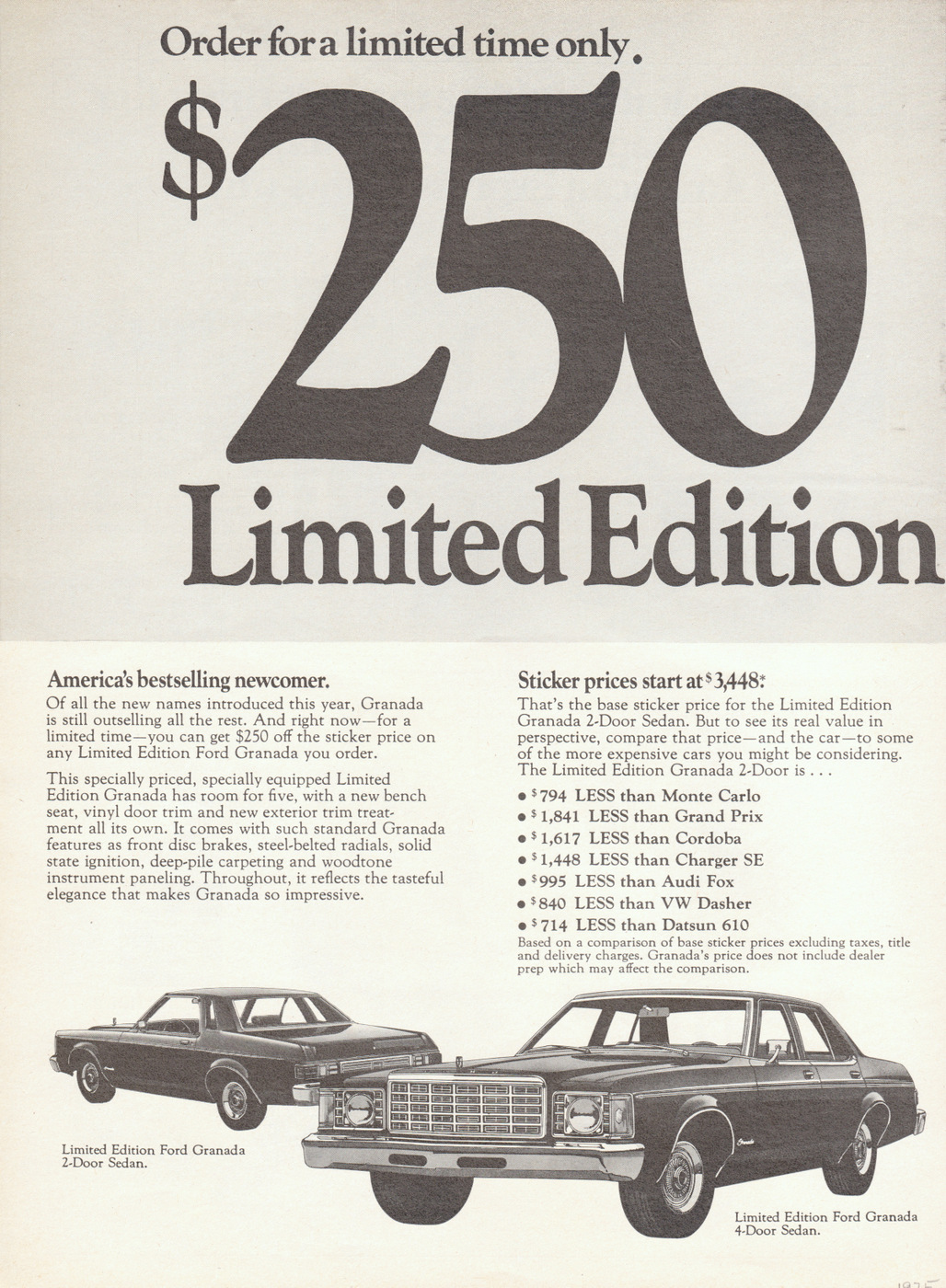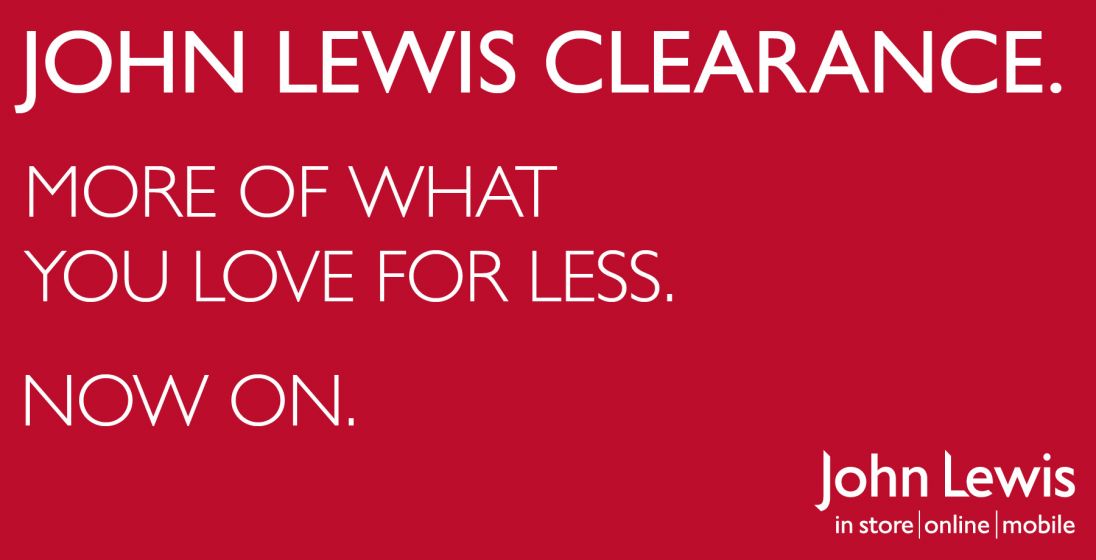As the saying goes, “we always want what we can’t have”. And that’s exactly what the scarcity heuristic is. It’s a mental shortcut that places value on items based on how easy it is to miss out on them. As consumers, we feel the effects of a loss more than a gain. So, the more difficult it is to get your hands on a particular item, the more value said item holds.
Classic example of the scarcity heuristic...
Brands and businesses have been using the scarcity heuristic to their advantage for decades. One of the most common words that’s popped up over the years is “limited”. And this 1952 advertisement from Ford uses it twice.
Not only is the Granada model advertised limited edition, but it’s on offer for a limited time too. Without consumers knowing the length of time that lies behind “limited”, it creates more value around the product. So, in true FOMO (fear of missing out) style, we feel like we need to get in on the action.
Who's using it now?
Although the scarcity heuristic was firstly used across print, it’s now become a staple tactic across ecommerce too.

Booking.com
You can expect a lot of “Only 3 left on our site!” and “In high demand!” on hotel overviews when you visit Booking.com. The travel site uses scarcity to create urgency and make customers think they’re going to miss out.
Supreme
Cult clothing brand, Supreme, is a brand built on scarcity. They use the heuristic across their social media channels to create a lot of hype around their products before they’re released, boosting the traditional supply-and-demand model.
John Lewis
John Lewis are the ones to learn from when it comes to clearance sales. Their customers know they have to act fast to avoid missing out as stocks and sizes are limited. They manage to keep everything on-brand though without seeming too hard-hitting and “salesy” by using soft copy: “More of what you love for less”.

What is Behavioural Economics?
Behavioural Economics has been around since the 60s. It blends elements of psychology and economics to identify the mental triggers, or bias, nudges and heuristics, that affect the decisions people make.
This blog series is your go-to guide for a snapshot into what these triggers are, and how they can be used in marketing to influence consumer behaviour.
A bit about us
As an agency, influencing behaviours is core to what we do and applying Behavioural Economics to marketing communications is a natural progression. If you are interested in understanding more about how we do this get in touch now.
Find out more about the connection between consumers and behavioural economics in our latest report on the top trends driving consumer behaviour. Download it here.
Let's make you the preferred choice.
Our Preference approach can be applied to any marketing challenge.
